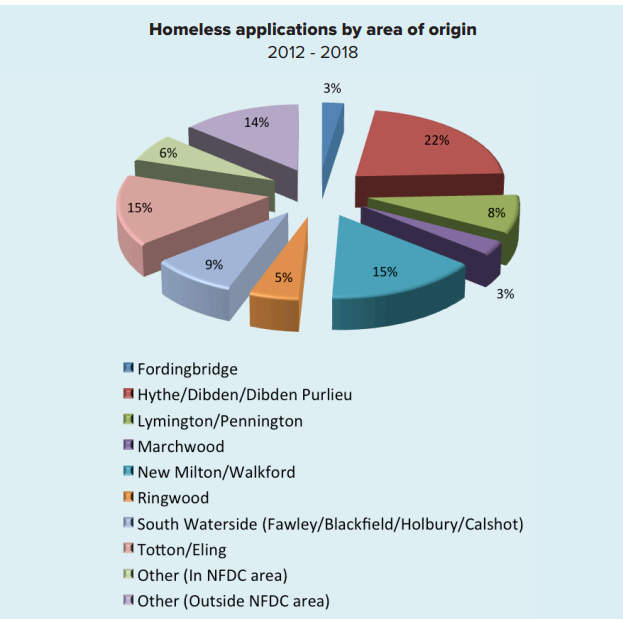The housing crisis in the New Forest (part one)
NFBN reporters go behind-the-scenes of the housing situation of our local area
I was joined over the summer by an intern and we both decided to investigate the housing crisis and how this national issue filters down onto our own area.
Today is part one with part two following next week.
Also, a note to say that due to my health, I’ve been unable to work much of late, so I apologise for missing the previous ‘monthly briefing’.
And as ever, if there is anything you would like us to investigate or stories to cover, email editor@newforestbusinessnews.co.uk.
Kerri L Watt
Editor
“Affordable housing is no longer affordable!” - the housing crisis in the New Forest
By Faye Hooton
Across the UK, millions are facing significant challenges due to the housing crisis. Surging rents, unaffordable home prices, and rising homelessness are among the issues encountered.
This article unpacks how the New Forest is being affected by the housing crisis and looks at the efforts being taken to address it.
What is the housing crisis?
Since early 2024, we’ve seen housing prices creep up. Zoopla states there is an expected annual increase of +2%, while income growth has barely reached 0.1%. Combined with a high demand for homes and a shortage of affordable housing, this has constrained the market, particularly in southern England.
Increasing rents have directly contributed to homelessness, with government reports showing that 34,220 households are now at risk—a 4.8% increase from the same quarter last year.
Due to much of the national park being covered by woodland and open forest, the New Forest faces unique housing challenges.
The district is primarily green belt land, with most of it managed by the national park. This protection complicates new housing developments, as these areas cannot be easily built on. The limited space increases demand and drives up prices, reducing affordability in the forest.
This leads to one of the main challenges faced in the district, the disparity between the low average incomes and high average house prices.
“Paying these higher mortgage costs just isn’t sustainable long term for either tenant or landlord.”
Local landlord
Those who work in the New Forest often can't afford to live there, and those who can afford to live in the district often work elsewhere. As a result, many local people are left without options for affordable housing.
The national park in the district also encourages a high number of second homes buyers. This, again, drives up house prices, and reduces the availability of properties for local residents.
These factors have resulted in an unstable housing market and a rise in homelessness.
Homelessness in the New Forest
As a result of the housing crisis, both nationally and in the New Forest, incidents of homelessness have risen significantly over the past few years.
According to a New Forest District Council (NFDC) report, there was a consistent rise in homelessness with a 23% increase in local authority statutory homelessness cases, rising from 89,120 in 2009/10 to 109,380 in 2017/18.
According to government reports, the primary causes of homelessness align with national trends.
The termination of private rented tenancies continues to be one of the leading causes of homelessness. This is largely due to rising mortgage interest rates, which force landlords to increase rent, making it unaffordable for many tenants.
A local landlord said: “I have had to put my house up for sale due to the mortgage price more than doubling each month. I have a superb long-term tenant, and it felt awful to increase their rent when rental prices are already so high.
“I’m sad they will have to move when the house sells but I really had no other choice. Paying these higher mortgage costs just isn’t sustainable long term for either tenant or landlord.”
Planning applications cancelled
An ambitious plan to build 1,500 new homes in Fawley, has now been scrapped. The new waterside town was expected to create up to 2,000 new jobs.
Developers announced that the project is “not viable.” New Forest District Council leader Jill Cleary responded by stating, "We look forward to working with Fawley Waterside, and their newly appointed team, to explore viable alternative development options for the site."
The cancellation of this plan has raised concerns about the loss of potential housing and job opportunities.
So, what is the New Forest District Council doing?
In response to the rising homelessness, the council developed a Homelessness and Rough Sleeping Strategy for 2019-2023. A new plan for 2024 onwards is currently being finalised.
Regarding the effectiveness of this strategy, I spoke to Liberal Democrat councillor for Dibden and Hythe, Cllr Malcolm Wade to hear his views.
“NFDC and the local government as a whole, has not been able to keep pace with some of the changing and challenging circumstances affecting the market, such as landlords selling off rented accommodation, which affects existing tenants and results in a reduction of available rented property.
“Whilst some work has been done recent stats show nearly a third of rough sleepers did not get into the housing pathway so there is more work to be done”
Cllr Malcolm Wade
Cllr Wade believes, “there is still much work to be done across the country and society to bring rough sleeping to an end”, and states, “a greater focus on prevention of homelessness and a better targeting of resources”, will help.
Although situations are improving, it seems there is still more work to be done nationally and locally.
How is the government helping?
New mandatory targets have been given to all councils in the UK. Deputy Prime Minister, Angela Rayner, has pledged to "correct the errors of the past" by promising an ambitious 1.5 million new homes over the next five years.
Under the new announcement, every local council must develop housing plans or face government intervention.
The targets aim to assist those most in need by ensuring that at least 50% of new housing developments in 'grey belt' areas are affordable housing.
Affordable housing, according to government reports, refers to homes that are let at least 20% below local market rents (affordable rental properties) or let at rates set between market rents and social rents (intermediate rental properties).
The government reports that the ‘Shared Ownership’ and ‘Affordable Homes Programme’ are on course to exceed its objective of delivering 130,000 new affordable homes, with 126,800 by the end of March 2023 and a further 5,000 remaining for 2023-24.
Despite these new mandates, the path out of the crisis remains far from straightforward.
Former councillor and New Forest resident, John Goodwin, said: “The cut back in government funding for housing has led to the absurd situation that affordable housing is no longer affordable!
“With house prices in the New Forest National Park twice that of adjacent towns, for instance, Totton and Calmore.
“The deposit to buy half a house on an affordable housing scheme while renting the remaining half would surely not be an affordable proposition. For the initial 50% ownership payment, a house could be purchased just outside the district”.
While significant efforts are being made to address the housing crisis, affordability remains a major challenge for residents in the New Forest area.
There is, however, hope. Zoopla reports that incomes are projected to increase by 4.5% in 2024, with expectations that income growth will outpace house price rises in 2025.
This could provide much-needed relief for those struggling with housing affordability.
Next instalment coming next week…







